
views
Selecting a Cage
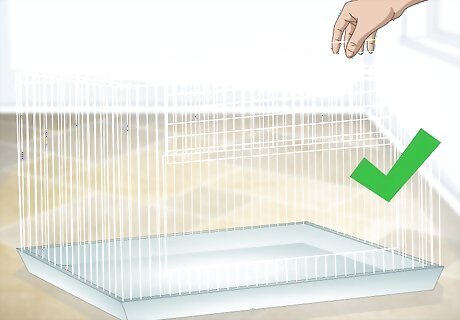
Choose from cages designed specifically for mice. Since mice are smaller than most pet rodents, you'll need to pick a simple cage that's designed for their tiny size. It should also have good ventilation so the mice won't overheat. For these reasons, don't buy hamster cages or glass aquariums designed for other animals. Look for cages at pet stores, online, or at second-hand shops. A 20" long glass aquarium with a mesh lid also works for a group of three female mice. Do note that glass tanks need to be cleaned more often, as the mice can otherwise develop respiratory issues.
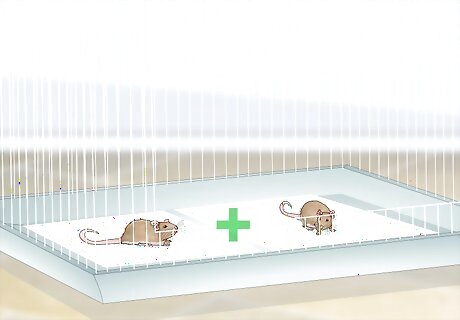
Get a cage that's large enough to house all of your mice. Plan for 1 cu ft (0.028 m) of cage space for the first mouse and add ⁄2 cu ft (0.014 m) for each additional mouse in the cage. This will give all of the mice plenty of space to run and interact with each other. For example, if you have 4 mice, you'll need a cage that's at least 2 ⁄2 cu ft (0.071 m) in size. If you have male and female mice that you don't intend to breed, put them in separate cages.
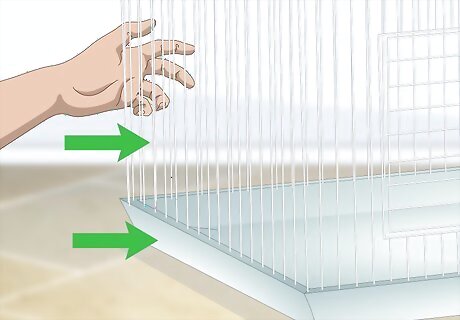
Pick a cage made of plastic, metal, or glass. You'll need a cage made of a material that's easy to clean and won't absorb urine. Cages made from plastic are inexpensive and lightweight although they are more likely to break than metal cages. Metal cages are usually stronger and provide good air circulation. Glass tanks with mesh lids (such as those used for fish or reptiles) make good, attractive cages, but it can be harder to attach toys to the top or side of the tank, plus it has to be cleaned more often. Avoid buying a cage made of wood, since urine will soak into it before you can clean it.
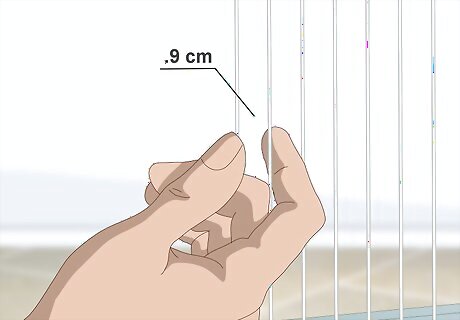
Check that the bars are no more than 0.9 centimetres (9.0 mm) apart. Since mice can escape if the bars are too wide, look for a cage that has narrow spacing. Instead of just glancing at the bar width, take the time to measure the distance between bars.Did You Know? This is one of the reasons why it's important to not purchase a hamster cage for your mice since the bars on a hamster cage are usually too wide apart.
Positioning the Cage
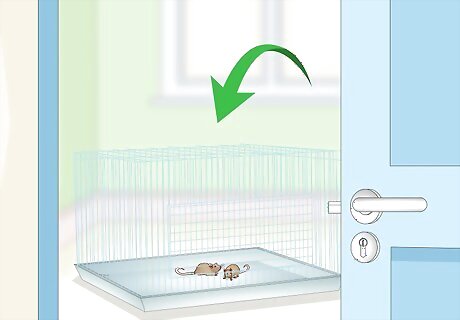
Pick a room that's safe and secure. Although you might not think your mice will escape, you should be prepared for a surprise escape. The room must be safe enough so that if the mice got out, they wouldn't be attacked by other house pets, such as cats, dogs, rats, or ferrets.Tip: To make a room more secure from other pets, consider setting up a baby gate so the larger pets can't get into the room with the cage.
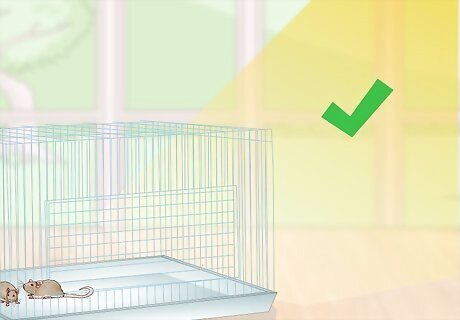
Find a spot with indirect natural light. Put the cage in a room in your house that gets natural light throughout the day. Since mice can overheat, keep the cage out of direct sunlight or bright light. For example, instead of setting the cage in front of a window that gets direct sunlight, place it against the wall that's perpendicular to the window.
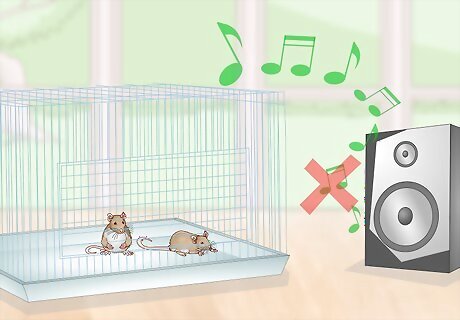
Choose a space away from loud noises to prevent startling the mice. Mice have very sensitive hearing so the room where you put the cage should be free from high-pitched sounds or sudden bursts of noise. The room shouldn't contain loud sound systems, alarms, or telephones. For example, don't put the cage against a wall that's shared with a loud washing machine or dryer. These can vibrate the cage and make noises that irritate the mice.
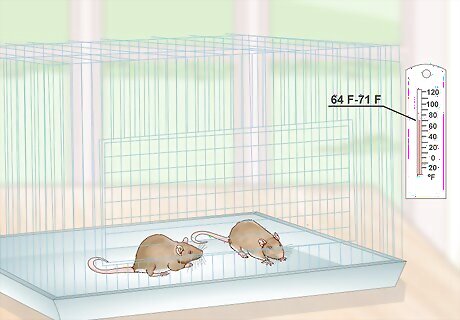
Keep the room between 64 °F (18 °C) and 71 °F (22 °C). It's important to keep the temperature around the cage at a constant temperature that's comfortable for the mice. You should also keep the cage in a room that doesn't have humidity fluctuations. For example, rooms like an air-conditioned office or a small bathroom aren't good for the cage since these rooms can become too dry or too humid for the mice.
Filling the Cage
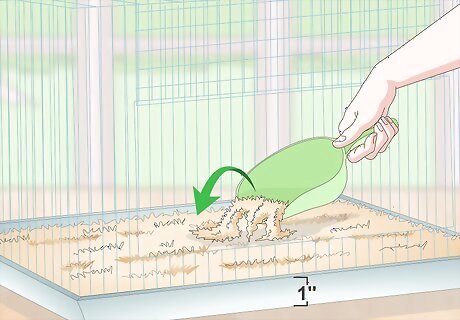
Spread at least 3 inches (7.6 cm) of bedding across the bottom of the cage. Purchase hay, shredded paper, or aspen shavings to spread in the cage. This will insulate the cage and the mice can use the bedding to create nests for sheltering. You also want enough bedding that your mice can burrow, which will means that they won't need their toys changed as often. Use a variety of materials so the mice can choose what they want to build their nests with.

Avoid using bedding that can sicken or injure the mice. Sawdust, cedar shavings, and pine shavings can cause respiratory problems so leave these out of the cage. You should also avoid putting cotton wool or fluffy bedding into the cage. The mice can shred these and choke on them or become tangled. If you choose to use aspen shavings, ensure that the shavings are made from toxic-free wood.

Put a water container in the cage for the mice to drink from. Attach a water bottle that has a drinking tube to the side of the cage. This will keep the water fresh because the tube will only dispense water when the mice want to drink. Check the water every day to ensure the mice always have access to fresh water. While you can set a water bowl in the cage, some mice like to throw bedding into it, so you may need to change the water frequently. Water bowls may work for elderly mice, however, many mice will just dirty them, and it may be possible for mice to drown in them, so try to avoid water bowls as much as possible.
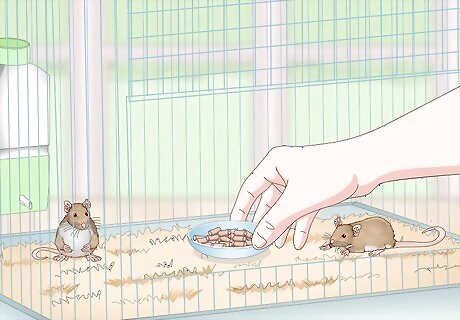
Place a food bowl in the cage. Pour mouse food into a clean bowl and place it in the cage. Try to raise the bowl up off of the bedding so bedding material doesn't get into the food bowl. You may see the mice remove some of the food from the bowl and hide it in the bedding. This is normal behavior.
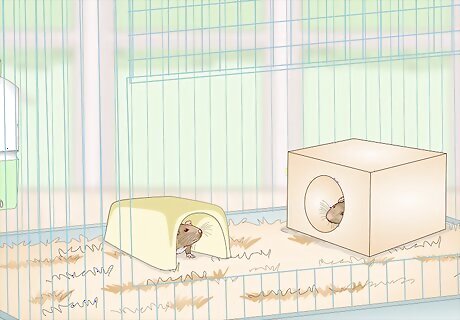
Add a house or hidey hole so the mice feel safe. Your mice will like somewhere to hide and feel secure even if they make their own nests in the cage. Set a small plastic domed house or hut in the cage so your mice can retreat and feel safe. Mice need to have at least two houses per mouse in case one mouse decides to become territorial, or a house becomes damaged.Tip: If you don't want to buy a house or hidey hole, put a small ink-free cardboard box into the cage. Set the box on its side so the mice can get in and out of it easily.
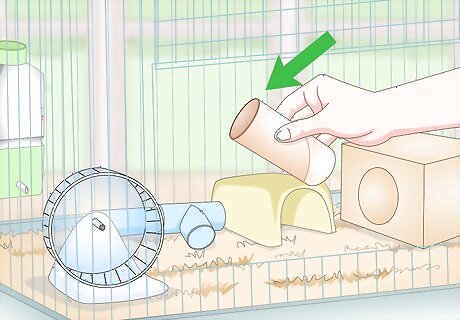
Include lots of toys for your mice to play with. To prevent your mice from becoming bored or sedentary, put toys for your mice to chew on and a rodent wheel in the cage. Choose a large plastic rodent wheel since their feet can become stuck in metal wire wheels. As for chewing toys, consider using: Paper towel or toilet paper tubes Hemp rope toys Plain wooden craft sticks Wood from a fruit tree, such as apple or cherry Hanging toys or ladders


















Comments
0 comment